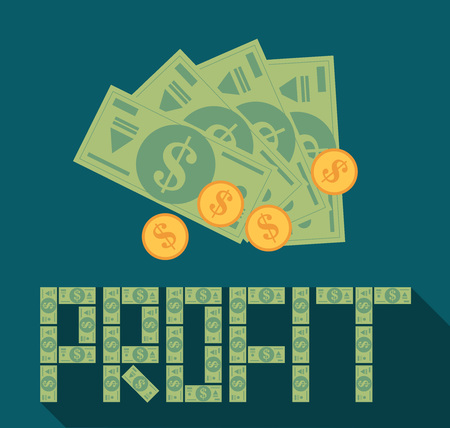1. Understanding Inflation and Its Impact
Inflation is the gradual increase in the prices of goods and services over time. While a small amount of inflation is normal in a growing economy, it can significantly affect your financial stability if not accounted for properly. One of the biggest impacts of inflation is that it reduces the purchasing power of your money, meaning that over time, the same amount of money buys fewer goods and services.
How Inflation Erodes Your Emergency Fund
Your emergency fund is meant to cover unexpected expenses, such as medical bills, car repairs, or job loss. However, if inflation rises and your savings remain the same, the real value of your emergency fund decreases. Here’s how inflation affects your savings:
| Year | Emergency Fund Balance | Purchasing Power (Adjusted for 3% Inflation) |
|---|---|---|
| 2024 | $10,000 | $10,000 |
| 2025 | $10,000 | $9,700 |
| 2026 | $10,000 | $9,409 |
| 2027 | $10,000 | $9,127 |
Main Factors Driving Inflation
The rate at which inflation occurs depends on several factors:
(1) Increased Demand for Goods and Services
If consumer demand grows faster than supply, prices go up, leading to inflation.
(2) Rising Production Costs
If companies face higher costs for raw materials and wages, they often pass those costs onto consumers.
(3) Government Policies and Money Supply
If too much money is circulating in the economy due to government stimulus or low interest rates, inflation can rise.
The Bottom Line on Inflation’s Impact on Savings
The longer your money sits in a low-interest savings account without adjustments for inflation, the less effective it becomes in covering emergencies. Understanding how inflation erodes purchasing power is crucial in ensuring that your emergency fund remains sufficient when you need it most.
2. How Inflation Affects Your Emergency Savings
Inflation erodes the purchasing power of your money over time, which means that the amount you set aside for emergencies today may not be enough to cover the same expenses in the future. As prices rise, everyday necessities like food, gas, and medical costs become more expensive, making it essential to adjust your emergency fund accordingly.
How Rising Prices Reduce Your Fund’s Value
When inflation increases, the real value of your emergency savings decreases. If you originally saved $10,000 to cover three to six months of expenses, but inflation rises by 5% annually, that same $10,000 will buy less each year. To maintain your financial security, you need to increase your savings to keep up with rising costs.
Adjusting Your Emergency Fund for Inflation
To ensure your emergency savings remain effective, consider these steps:
(1) Recalculate Your Monthly Expenses
Review your current monthly expenses and adjust for inflation-driven price increases. This will help determine how much more you need to save.
(2) Increase Your Savings Goal
If living expenses have risen by 10%, aim to increase your emergency fund by at least the same percentage.
(3) Use a High-Yield Savings Account
Keeping your emergency fund in a high-yield savings account can help offset some inflationary losses by earning interest on your balance.
Example: The Impact of Inflation on Emergency Savings
| Year | Inflation Rate | Required Emergency Fund (for same purchasing power) |
|---|---|---|
| Year 1 | 0% | $10,000 |
| Year 2 | 5% | $10,500 |
| Year 3 | 5% | $11,025 |
| Year 4 | 5% | $11,576 |
| Year 5 | 5% | $12,155 |
This table illustrates how a steady 5% inflation rate can significantly increase the amount needed in an emergency fund over just five years.

3. Adjusting Your Emergency Fund for Inflation
Inflation erodes the purchasing power of your money over time, which means that the emergency fund you built a few years ago may no longer be sufficient to cover unexpected expenses. To ensure your emergency savings keep up with rising costs, consider adjusting your contributions periodically. Here are some practical strategies to help you maintain an inflation-proof emergency fund.
(1) Increase Your Contributions Annually
One of the simplest ways to keep your emergency fund in line with inflation is by increasing your contributions every year. A good rule of thumb is to adjust your savings based on the annual inflation rate.
| Year | Inflation Rate | Suggested Contribution Increase |
|---|---|---|
| 2022 | 6% | Increase by 6% |
| 2023 | 4% | Increase by 4% |
| 2024 | 3% | Increase by 3% |
(2) Adjust for Lifestyle Changes
If your cost of living has increased due to factors such as higher rent, healthcare costs, or family expenses, your emergency fund should reflect these changes. Review your monthly expenses annually and adjust your savings goal accordingly.
(3) Set Up Automatic Increases
Many banks and financial apps allow you to set up automatic transfers to your emergency fund. Consider scheduling an annual increase in these transfers so that your savings naturally grow without requiring manual adjustments.
(4) Diversify Where You Keep Your Emergency Savings
To combat inflation, it might make sense to split your emergency savings between different types of accounts. Here’s a comparison of common options:
| Savings Option | Pros | Cons |
|---|---|---|
| High-Yield Savings Account | Easy access, higher interest rates than regular savings accounts | Interest may not always outpace inflation |
| Money Market Account | Slightly higher returns with check-writing capabilities | Possible withdrawal restrictions and fees |
| I Bonds (U.S. Treasury) | Interest adjusts with inflation, government-backed security | Funds are locked for at least one year, penalties for early withdrawal within five years |
| Laddered CDs (Certificates of Deposit) | Higher interest rates than savings accounts, predictable returns | Lack of liquidity; penalties for early withdrawal |
(5) Reevaluate Your Fund Size Regularly
A good practice is to review your emergency fund at least once a year or whenever there is a major economic shift. Use the following steps to reassess if your fund size meets current needs:
(1) Check Current Inflation Rates
The U.S. Bureau of Labor Statistics publishes inflation data regularly. Compare this rate with previous years to see how much your fund should grow.
(2) Calculate Updated Living Expenses
Add up essential expenses like rent/mortgage, utilities, groceries, healthcare, and insurance premiums. Multiply by three to six months based on your preferred savings buffer.
(3) Adjust Your Savings Goal Accordingly
If the cost of living has increased significantly, raise your target emergency fund balance to match current conditions.
By proactively adjusting the size of your emergency fund in response to inflation, you can ensure that youre always financially prepared for unexpected situations without losing purchasing power over time.
4. Where to Keep Your Emergency Fund
When inflation rises, the value of your cash savings decreases over time. To help protect your emergency fund from losing too much purchasing power, consider storing it in accounts that offer better returns while maintaining accessibility and security. Here are some low-risk options to consider:
High-Yield Savings Accounts
High-yield savings accounts (HYSAs) offer higher interest rates than traditional savings accounts, helping your emergency fund grow slightly faster. These accounts are typically FDIC-insured, meaning your money is protected up to $250,000 per depositor.
Money Market Accounts
Money market accounts (MMAs) function similarly to savings accounts but often provide higher interest rates and limited check-writing capabilities. They’re also FDIC-insured, making them a safe option for emergency funds.
Other Low-Risk Alternatives
If you want additional options beyond traditional bank accounts, consider these alternatives:
(1) Certificates of Deposit (CDs)
CDs can offer higher interest rates than savings accounts, but they require you to lock in your money for a set period. A CD ladder strategy—where you stagger multiple CDs with different maturity dates—can provide better liquidity while still earning interest.
(2) Treasury Bills (T-Bills)
T-Bills are short-term government securities that are considered low risk. They can be a good hedge against inflation since they offer competitive yields and are backed by the U.S. government.
Comparison of Emergency Fund Options
| Option | Interest Rate | Liquidity | Risk Level |
|---|---|---|---|
| High-Yield Savings Account | Moderate | High | Low |
| Money Market Account | Moderate | High | Low |
| CDs (Ladder Strategy) | Higher | Medium | Low |
| Treasury Bills (T-Bills) | Competitive | Medium | Low |
Selecting the right place to keep your emergency fund depends on how quickly you may need access to it and how much inflation protection you want. Combining multiple options can help balance growth and accessibility.
5. Other Ways to Protect Your Finances
Inflation can erode your purchasing power, making it essential to take proactive steps beyond just adjusting your emergency fund. Here are some additional financial strategies to help safeguard your overall financial stability.
Diversify Your Investments
Investing in a mix of assets can help protect your money from inflations impact. Consider these options:
| Investment Type | Why It Helps Against Inflation |
|---|---|
| Stocks | Historically, stocks have outpaced inflation over the long term. |
| Bonds (Especially TIPS) | Treasury Inflation-Protected Securities (TIPS) adjust with inflation, helping preserve value. |
| Real Estate | Property values and rental income tend to rise with inflation. |
| Commodities (Gold, Oil, etc.) | Tangible assets like gold often hold value during inflationary periods. |
| Diversified Mutual Funds & ETFs | A mix of investments spreads risk while offering growth potential. |
Reduce Unnecessary Expenses
Curbing non-essential spending can free up more money to counteract rising costs. Try these cost-cutting measures:
- Create a Budget: Track expenses and prioritize essentials over discretionary spending.
- CUT Subscription Services: Cancel or downgrade streaming, memberships, or services you rarely use.
- Avoid High-Interest Debt: Pay off credit cards faster to minimize interest payments.
- Bargain Shop: Use discounts, cashback apps, and bulk buying for savings.
- CUT Energy Costs: Simple changes like LED bulbs and smart thermostats reduce utility bills.
Increase Your Income Sources
A higher income can help offset the effects of inflation. Consider these approaches:
(1) Ask for a Raise or Promotion
If your job performance is strong, negotiate a salary increase to keep up with rising costs.
(2) Start a Side Hustle
A part-time gig or freelance work can provide extra income without relying solely on your main job.
(3) Invest in Skills & Education
Pursuing certifications or training can boost career opportunities and earning potential.
(1) Passive Income Streams
Diversify earnings with dividend stocks, rental properties, or online businesses.
(2) Monetize Hobbies
If you have skills like graphic design, writing, or crafting, turn them into an income source.
Taking a multi-pronged approach—balancing investments, cutting costs, and boosting income—can help protect your finances from inflation’s impact while strengthening long-term financial security.


